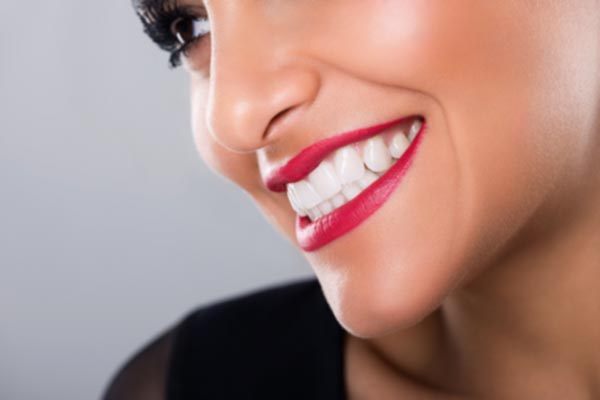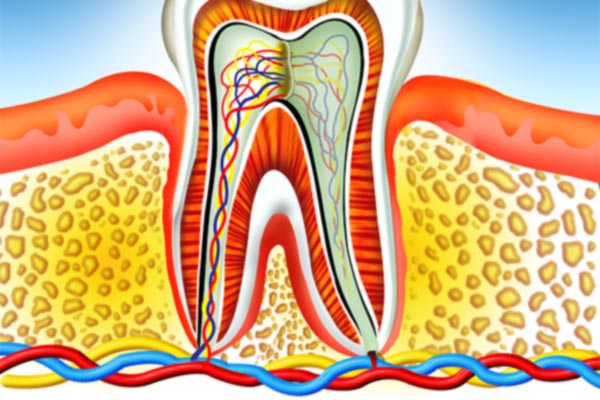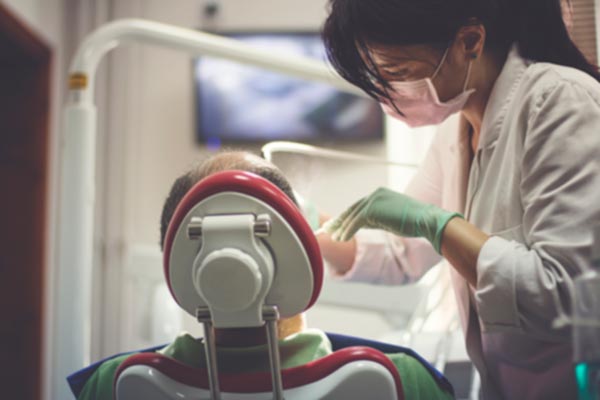
Cosmetic Dentistry
COMPOSITE RESIN RESTORATIONS
All of our restorations at Dhuga Dental Centre are composite resin restorations or “white fillings” as they are commonly referred to. These restorations allow our dental team to restore your teeth to their normal shape, size and function without altering the colour of your teeth as would happen with amalgam restorations, commonly known as “silver fillings”.
PORCELAIN VENEERS
Veneers are thin laminates of porcelain which are placed on prepared teeth in order to alter the colour, shape or size of the teeth. They are chemically bonded to the underlying tooth structure.
TEETH WHITENING
The patients for whom tooth whitening or “bleaching” works best is for people whose teeth have become a little more yellow over the years due to age, coffee or tea drinking and smoking. Patient’s whose teeth are more gray than yellow due to any of the above reasons or fluorosis of the teeth tetracycline staining or some other reason do not respond as well to tooth whitening. The process of whitening involves a mould being taken of both your upper and lower teeth. A few days later you would return to the office to pick up plastic trays perfectly fitted to your mouth. We will provide you with tooth whitening material for your trays and show you how to use them at home. You will need to wear the trays for two hours per day for two weeks to notice a significant difference.

Crowns (a.k.a. “Caps”)
What are they and why are the needed?
A crown or a “cap” is a restoration that covers and surrounds a tooth from the biting or chewing surface of the tooth down to the gumline of that tooth and all the way around. The crown serves to protect and strengthen the tooth when it has had a large previous amalgam or composite resin restoration, when it has been previously root canal treated or when the tooth has been damaged or broken in an incident or accident. Crowns are often used when teeth are misshapen or discoloured as well to improve on the shape and esthetics of the tooth while at the same time protecting the tooth.
What is involved in the procedure?
The preparation and placement of a crown is a two-appointment procedure. At the first appointment the tooth is prepared in order to allow for the proper fitting of the crown. At the end of this first appointment an impression or mould is taken of the tooth and gums, the adjacent teeth and the opposing teeth and sent to a commercial laboratory for the fabrication of the crown. The fabrication of the crown at the laboratory usually takes approximately 2 weeks. In the meantime, a temporary crown is made for you at the first appointment and placed over your tooth. At the second appointment, the temporary crown is removed and the permanent crown is cemented into place. Crowns are commonly expected to last between 10 and 15 years.

Endodontic Treatment (a.k.a. Root Canal Treatment)
What are the different parts of a tooth?
Each tooth in your mouth is composed of an outer enamel layer which is the white part of your tooth that you can see. Inside the white part of the tooth is the bulk of the tooth which is known as the dentin. It is inside the dentin that there is a soft tissue known as the pulp of the tooth. This pulp is composed of nerves, which provide feeling and sensation in your tooth. The pulp further consists of arteries and veins which supply the blood supply and nutrients to your teeth. From this pulp, there are thin branches of the pulp that enter into the roots of the tooth, these are known as the root canals. Most molars have 3 or 4 root canals inside the roots of the tooth and most of your front teeth have 1 root canal.
Why do I have pain with this tooth?
The pulp and root canal system is naturally a sterile, bacteria free environment. When that bacteria free environment is contaminated by either a large cavity or a break/fracture of the tooth that penetrates into the pulp and root canal system that allows bacteria to enter and cause an infection in the tooth. This infection can result in a swelling of the pulp and root canal system which is perceived as pain. This swelling can be aggravated by hot or cold or relieved by hot and cold depending on the stage and severity of the infection – this aggravation is perceived as pain. The infection can also cause an abscess to form at the end of the root. When an abscess forms, pain is often felt when the patient bites down on that tooth or puts pressure on that tooth because the pressure is being placed on the abscess. The only way to relieve the pain is to eliminate the infection in the pulp and root canal system – endodontic treatment.
What is endodontic treatment (a.k.a. Root Canal Treatment) and why is it needed?
Endodontic treatment is the removal of the infected tissue in the pulp and root canal system from the infected tooth.
What is involved in the procedure?
Depending on the severity of the infection, endodontic treatment can be a one appointment or two appointment procedure. Local anesthetic is administered for that tooth and a rubber sheet is placed over the tooth in order to expose it only and keep the lips, tongue and other teeth out of the way during the procedure. The pulp and root canal system is accessed by entering the tooth through the top of the tooth with a small hole. This allows for the removal of the pulp tissue and the root canal system tissue. Different chemicals and disinfectants are used to clean out the pulp and root canal system at this time along with small files used by hand as well as by machine. If the endodontic treatment was assessed to require two visits, medication is often placed inside the tooth at this time and a temporary filling placed in the tooth. The second appointment is usually 7-10 days after the initial appointment at which time the temporary filling is removed and the root canal system is filled in with a chemical and rubber based material to prevent future contamination by bacteria. If the tooth is missing a significant amount of tooth structure, a post is often placed at this time in one or more of the root canals and then a filling is placed on top of the post. A crown is often advised on a root canal treated tooth because the tooth has been weakened by the removal of the pulp and root canal tissue as well as being weakened by the removed tooth structure during the procedure.
Risks and Complications of Endodontic Treatment:
Although the success rate of endodontic treatment is above 90%, there is always the possibility that the treatment may fail. This can occur for a number of reasons from a missed root canal not seen during initial treatment to a broken file or instrument in one of the root canals to a failure for no apparent reason. At this time, a referral to a specialist is often considered.
After Endodontic Treatment:
For 3-5 days after endodontic treatment patients often have a little sensitivity or discomfort commonly known as a flare-up. This is usually best controlled with anti-inflammatory medication which will be advised to you after your appointment.

Periodontal Treatment, Preventive appointments & Gum Disease (a.k.a. “Cleanings”)
Why do I need to see the hygienist and dentist every 3-6 months?
There are many aspects of your oral health that our team at Dhuga Dental Centre help you to maintain and improve upon. We are not only constantly monitoring for cavities in your mouth but we are also looking out for gum disease in your mouth such as gingivitis and periodontitis. The leading cause of tooth loss is gum disease or periodontal disease and frequent visits with our hygienists and dentists can significantly decrease the possibility of you losing your teeth.
Causes of gum disease:
There are a number of factors involved with causing gum disease. The largest and most important factor is the accumulation of plaque and calculus (commonly known as tartar) on your teeth that causes inflammation and infection of the gums and underlying bones. This can lead to bleeding of your gums, loss of support and bone around your teeth and a bad taste and smell in your mouth. Other causes of gum disease are smoking, genetics and different medical conditions.
Periodontal treatment and preventing gum disease:
In the early stages of gum disease, scaling and root planning of your teeth by one of our hygienists is a very effective way to treat gum disease. This combined with proper at home care of brushing and flossing is very effective at decreasing plaque and calculus levels in your mouth. Further, regular visits and professional preventive appointments with the hygienists and dentists at Dhuga Dental Centre will aid in monitoring and treating gum disease. More severe cases of gum disease may require treatment with antibiotics or antibacterial rinses and some cases may require periodontal surgery to help with your at home care and maintenance.

Children’s Treatment
When should I first bring my child to the dentist?
Children can begin coming to the dental office as early as 18 months of age with their parents during their regular visits. This allows the child to become familiarized with the dental environment and become accustomed to the different sites and people in the office. Children are invited to sit in the dental operatory with one parent as the other parent has their preventive appointment with our hygienist. This allows the child to see mom or dad get into the dental chair, lye back in the dental chair, have their scaling and polishing done along with their fluoride treatment and discuss their oral health with our dental team. This experience of regular visits and seeing what is happening in the office is valuable when it comes time to see the child for their first visit. Often times we will attempt to take a look in your child’s mouth between the age of 2 and 3. We should begin an initial examination appointment at the age 3 at the latest.
This appointment will allow us to:
- Complete an initial examination of the teeth, gums and soft tissues of your child’s mouth
- Initial professional cleaning of a polishing
- Discuss at home brushing techniques, use of a non-fluoridated vs. fluoridate toothpaste for your child and flossing your child’s teeth
- Discuss different foods that can cause cavities
- Discuss baby bottle decay
What is Baby Bottle Decay and how to prevent it:
Baby bottle decay is cavities occurring in your child’s mouth as a result of long periods of exposure of the teeth to sugary liquids. This is usually milk but it can often be juice, soft drinks or other beverages as well. Children should not be going to sleep at any age with any of the above mentioned liquids in their mouth in a baby bottle. This long-term (4-10 hours) exposure of the teeth to sugar causes significant decay of the teeth very quickly, often most noted on the upper front teeth and secondarily on the back teeth in both the upper and the lower arches. In order to prevent baby bottle decay, a child should not be allowed to fall asleep with any sugary liquids in their mouth. Baby bottles should be removed or have only water in them.

Grinding & Clenching Treatment
Do you grind and/or clench your teeth?
Many patients grind and/or clench their teeth. Some patients grind and/or clench their teeth at night in their sleep, some during the daytime when they are concentrating on something or when they are under stress in a particular situation or time of day. Often times patients are aware that they grind and/or clench their teeth when we mention in our findings at their initial examination that we believe they do so. Other times patients are unaware that they grind and/or clench their teeth. This may be due to the fact that the damage we are seeing in their mouth which indicates that they are grinding and/or clenching their teeth has been present for a long time and they have since discontinued the habit or the patient is unaware of the habit. Sometimes patients who grind and/or clench their teeth at night are not aware of it but they often wake up in the morning with headaches at the side of their head just above their temporomandibular joint (TMJ) (a.k.a. Jaw Joint) or a stiff neck which may be associated with grinding and/or clenching their teeth. Often if the patient is grinding and/or clenching their teeth at night they may not be aware of it but their spouse is aware of it when questioned about it because they hear it during the night.
Treatment for grind and/or clenching your teeth:
There are different modalities of treatment that are evaluated on a patient by patient basis for those who grind and/or clench their teeth. There are different treatment options available to you at Dhuga Dental Centre if you grind and/or clench your teeth such as an occlusal equilibration (a.k.a. bite leveling) and a periodontal appliance (a.k.a. nightguard).
An occlusal equilibration involves an assessment of the way your teeth fit and bite and chew and grind together and the removal of any interferences in order to level or smooth out your bite when you bite and chew and grind your teeth. Often times when this discrepancy is removed and the bite is equilibrated in this way the grinding and/or clenching habit significantly decreases or is eliminated all together.
A periodontal appliance (a.k.a. nightguard) is a plastic mouth piece that is made for your mouth. It is a two appointment procedure. At the first appointment an impression or mould is taken of your teeth and sent to a commercial laboratory where the appliance is fabricated to the exact specifications of your teeth. At the second appointment the appliance is fitted in your mouth and instructions provided to you. The appliance works by preventing your top teeth from hitting your bottom teeth and preventing the grinding and/or clenching habit and eliminating the damage to your teeth and slowly helping you break your habit.

Dental Implants
A dental implant is a metal screw which is placed in your jaw bone during a surgical procedure to replace a missing tooth. The dental implant replaces the missing root or roots that were once in your jaw bone. After the dental implant is placed, a crown is placed on top to replace the missing tooth.

Bridges
What are they and why are the needed?
A bridge is permanently fixed dental appliance which serves to replace one or more missing teeth in your mouth. Bridges work by connecting two or more existing teeth on either side of a space (commonly known as abutments) in your mouth together. Essentially, bridges are crowns on two or more teeth that you have in your mouth connected together with a false tooth (commonly known as a pontic). The bridge cannot be taken out of your mouth as it is cemented permanently. Bridges are important when missing teeth in your mouth in order to prevent teeth next to the space from tipping and drifting into the space which causes problems with your bite, chewing efficiency and speech. The tooth opposing the missing tooth or teeth can often overerupt into the space as well thereby causing problems in the opposite are of the mouth as well.
What is involved in the procedure?
The preparation and placement of a bridge is a two-appointment procedure. At the first appointment the abutment teeth are prepared in order to allow for the proper fitting of the abutments of the bridge over the teeth. At the end of this first appointment an impression or mould is taken of the teeth and gums, the adjacent teeth and the opposing teeth and sent to a commercial laboratory for the fabrication of the bridge. The fabrication of the bridge at the laboratory usually takes approximately 2 weeks. In the meantime, a temporary bridge is made for you at the first appointment and placed over your tooth. At the second appointment, the temporary bridge is removed and the permanent bridge is cemented into place.
At home care for your bridge?
It is vital for the longevity of the bridge and for the overall health of your mouth that at home care is of the utmost importance when you have a bridge in your mouth. Proper brushing and flossing including the use of a floss threader under the bridge each day and regular continuing care visits to Dhuga Dental Centre are essential to maintain your bridge and oral health effectively. Bridges are commonly expected to last between 10 and 15 years.

Dentures (a.k.a. “False Teeth” or “Plates” or “Partials”)
What are they and why are the needed?
Dentures are removable appliances which replace missing teeth in your mouth. They are fabricated from acrylic and often they are combined with different metals for increased strength and stability. Dentures are important for patients who are missing teeth in order to maintain their current teeth in ideal health. When there are missing teeth in the mouth, these gaps often allow for adjacent teeth to tip or drift into the space. Also, teeth in the opposing arch often erupt into the opposing space – all of these problems cause significant damage to the patient’s bite, the health of the gums, bones and tissues around the adjacent teeth and can lead to the loss of these adjacent teeth. Dentures increase the chewing efficiency of patients, improve the esthetics of their teeth as well as their overall appearance and help in their speech.
What is involved in the procedure?
When considering dentures, your overall oral health will first be evaluated at a complete examination. Initial impressions or moulds of your upper and lower teeth are often taken in order to study your teeth, your current bite and the existing and missing teeth in your mouth. After this initial appointment, the treatment plan will be presented to you along with different options available to you. Once a course of treatment has been decided, a final set of impressions or moulds are taken and sent to a commercial laboratory to begin the process of making your dentures. There are often 3-4 appointments set 1 week apart between this first appointment at which your final impressions or moulds were taken and the last appointment at which you walk out of the office with your brand new smile. At these appointments different measurements are taken, different stages of the dentures are fitted and tried into your mouth and you will approve different stages of the denture as you move along in the process.

Orthodontic Treatment (a.k.a. braces)
Orthodontic treatment does not just involve braces. Generally, orthodontic treatment refers to straightening out crooked or misaligned teeth using removable or fixed appliances in the mouth, which often times are braces. Children are regularly monitored at Dhuga Dental Centre during their preventive appointments with our hygienists for the need for active orthodontic treatment.

Oral Surgery
Often times a tooth is unrestorable or the patient opts to have the tooth extracted instead of root canal treatment. Extractions of teeth, both simple and complicated, are performed at Dhuga Dental Centre. The procedure involves local anesthetic to anesthetize (a.k.a. freeze) the area. Patients are comfortable during all their procedures at Dhuga Dental Centre including extractions. You may watch satellite television during your procedure, your favourite movie or just close your eyes, relax and enjoy a back massage in our dental chair.
POST-OPERATIVE INSTRUCTIONS FOLLOWING ORAL SURGERY
Bite continuously on the gauze placed over the surgical area for 30 minutes. This will help in forming a blood clot. After 30 minutes, remove the piece of gauze and take another piece of gauze, place it over the surgical area and continue biting on it until you feel the need to change the gauze, usually 30 minutes. It is normal for the gauze to get wet. Swallow the spit forming in your mouth. DO NOT SPIT.
Do not change the gauze too often; it will disrupt the formation of blood clot. Throw the gauze out before you sleep. If you find thick, jello-like clots in your moth, the blood clot has not formed.
In this case:
- take a piece of gauze
- fold it
- place it over the surgical area
- continue biting on it
It is very important that you get the prescribed medication TODAY and you finish the course of the antibiotics as directed. Take the pain medication only if necessary. The pain medication causes drowsiness, so refrain from any activity requiring agility.
The second anaesthetic, if administered will last approximately seven hours.
After you go home, start applying ice-packs to the outside of your face overlying where the tooth/teeth were extracted. Put approximately four to five ice cubes in a plastic bag. Wrap the plastic bag in a handkerchief. Take the opposite ends of the handkerchief and tie knots to create a hand grip for yourself. Apply the ice-packs to the surgical areas of your face for 10 minutes at a time and then take a 10 minute break from the ice. Continue applying the ice-packs for up to 48 hours.
Today, sleep with two pillows to keep your head elevated above your heart. This will help to prevent the build-up of blood pressure which causes swelling. You may get some swelling but it will decrease after five to seven days.
Ensure you rest today. No heavy exercise, lifting or work.
Do not spit, smoke or drink through a straw. This causes negative pressure in your mouth and it will distract the formation of the blood clot or it may loosen the existing blood clot.
Brush your teeth as normal, with toothpaste. Do not worry if the paste goes near the surgical area. Remember to rinse your mouth very slowly. DO NOT SPIT – drool the excess paste and water out by leaving your mouth open over the sink and allowing the water to naturally fall out of your mouth.
Start salt water rinses two days after the surgery. Mix ½ teaspoon salt and eight ounces of warm water. Rinse as regularly as you feel comfortable with for one week.
The stitches may need to be removed one week after the surgery appointment.
Maintain a soft diet for today including milk, juice and warm soup. Avoid hot items. Tomorrow, enjoy mashed potatoes, pasta, scrambled eggs and other soft foods.
If you are having any problems, or have any questions, call our office at 905.879.1600.
We will be seeing you in one week to follow-up on your healing. We will provide you with mouth exercises if you are experiencing mobility issues.
What you can expect following your appointment:
1 to 6 hours:
Return of sensation
Initial onset of discomfort
Slow steady bleeding
6 to 12 hours
Minor bleeding
Increase in discomfort
Mild swelling
Feverish
Fatigue
12 to 24 hours
Little or no bleeding
Further increase in discomfort
Moderate swelling
Decreased mouth opening
24 to 48 hours (1 to 2 days)
Maximum Discomfort
Increasing swelling
Possible Stomach sensitivity with respect to drugs
Little or no bleeding
Possible discolouration and bruising overlying area
Further decreased opening
Discomfort on change of position or exertion
Can be the worst period
48 to 96 hours (2 to 4 days)
Discomfort starts to decrease
Swelling still increasing
Further discolouration and bruising over area
No bleeding
Limited opening of mouth
5 to 7 days
Very little discomfort
Swelling begins to decrease
Decreasing discolouration and bruising
No pain except when you lie down or exert energy
No bleeding
Getting back to eating normal foods
Mouth opening starting to improve
DO:
Cover your pillow the first 2 nights to avoid staining from drooling
Call if there’s a problem
Begin salt water rinses after 24 hours – as often as you are comfortable with
DO NOT:
Smoke for 96 hours (4 days)
Use a straw
Spit
Rinse in the first 24 hours
Brush for 24 hours
Exercise
Mission
Communication is never a problem at Dhuga Dental Centre.
